Peru is associated with two things: first, the imposing and mysterious Lost City of the Incas - Machu Picchu, and then many people think of the cute and famous animal that you will have the opportunity to see there. We are talking about the famous llamas of Peru. We also cannot forget to mention the adorable cousin of the llama: the alpaca. In this blog, you will learn more about these South American animals that can conquer your heart during your expedition to Machu Picchu. You can take unforgettable photos with them as well. Let's start with the king of your journey, the lama, a domesticated mammal, a descendant of a wild species of the guanaco. Indigenous peoples of South America have been using it to transport certain foods and useful things as well as for personal transportation for thousands of years.
Llamas
Llamas are known under the scientific name "Lama glama". There are 4 species of very similar camelids in South America, sometimes called "New World camels". They are llamas, alpacas, vicuñas and guanacos. The first two are domesticated species, while the last two are their wild ancestors. One of the most impressive facts about Peruvian llamas is that they were necessary for the construction of the old city of Machu Picchu. Lama was domesticated in Peru 4,000 - 5,000 years ago. It is a member of the camel family and shares certain peculiarities with them, such as a long neck and a split upper lip, but it does not share the ability of camels to survive long periods without water. Instead, it is adapted to live at high altitudes.
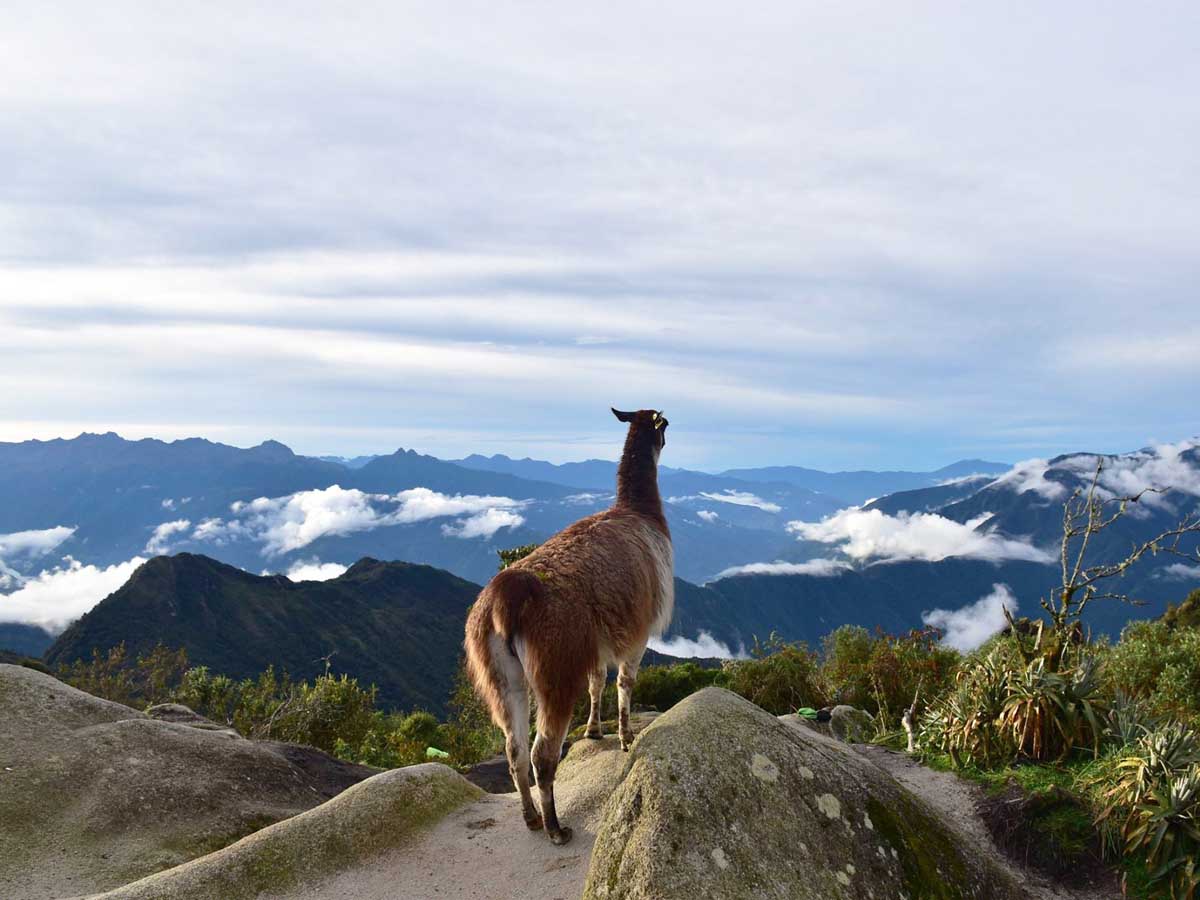
Description of Llamas
The llama has a long, thin neck and a thick fur, the colour of which ranges from dark beige to white, although the most common pattern is reddish-brown with white or yellow spots. The face is narrow, has round ears and a split upper lip. It has 32 teeth, from which the lower incisors protrude. Their feet are equipped with 2 toes supported by a thick pad. It has a large amount of haemoglobin and its red blood cells are oval. It is an adaptation that allows survival in a low-oxygen environment because the species spends its life at high altitudes. This camelid weighs 130 to 200 kilograms and measures approximately 1.7 to 1.8 meters in height.
Llama Behaviour
In general, the llamas are social in nature. Its life takes place in groups of 20 individuals, of which there are about 6 females with young. A dominant male may be aggressive towards other males to defend its territory, and sometimes physical clashes occur. If it feels threatened, it is sure to spit, kick or bite an intruder who dares to approach its territory or dominate. Llamas usually do not spit often and spit only if they have a reason, especially when it comes to their psyche. Females spit mainly to demonstrate disinterest in males who wish to mate. This is such a common behaviour that llama breeders use a spitting test to determine if a female is pregnant or not.
Feeding Llamas
The herbivorous llama feed is composed mostly of lichens, shrubs and almost any type of vegetation found in the mountains. Water is almost always obtained from the vegetables it consumes. Cubs are able to swallow 2 to 3 litres in one sitting. Digestion takes a longer process than in other mammals because they are ruminants. Therefore, it must regurgitate its food to go through its 3 stomachs.
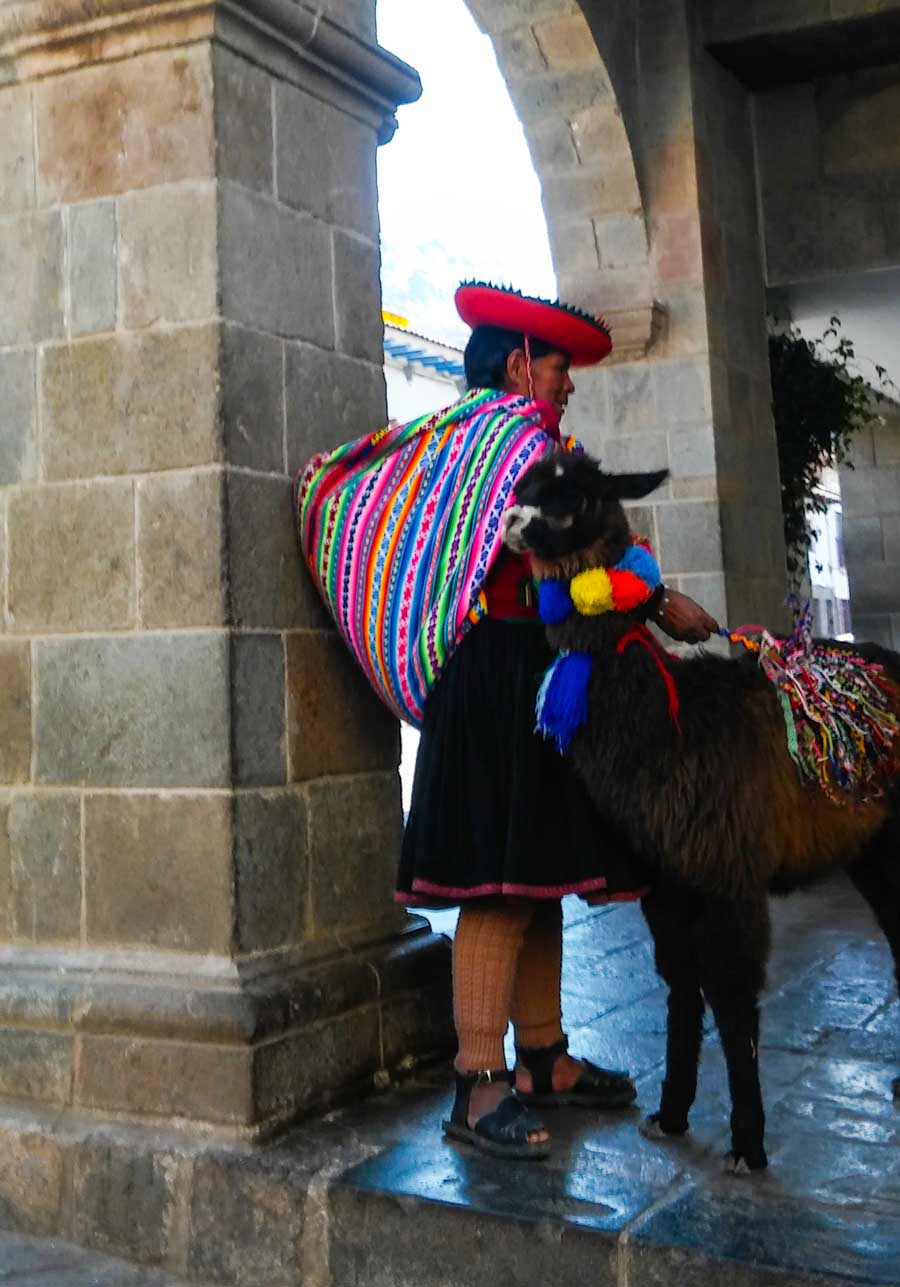
ALPACAS
Alpacas are one of the most beautiful South American camelids. In relation to llamas, guanaco and vicuña, alpacas have been valued for their fur since the pre-Inca era due to the properties and quality of their hair. There are mainly two species of alpaca: Huacayo and Suri.
Description of Alpacas
Alpaca, a member of the order Artiodactyla and the family Camelid, is characterized by the fact that it is the most numerous and smallest South American species of camelids. Like llamas and guanaco, they differ in weight and size in appearance because the adult specimen is between 81 and 99 centimetres tall and weighs between 48 and 84 kilograms. It has big and pointed ears. The body is thin and protrudes from the long narrow neck. This thin neck is, of course, noticeable if it is not covered with wool because it grows up to 50 centimetres and has different white, brown and black colours. The coat can be uniform or multicoloured. Its canines are located in both jaws and measure about 3 centimetres in length. Females do not have canines as developed as males, but except for this trait, both sexes are physically similar.
Alpaca Behaviour
Alpaca is a social animal and lives in family groups. Some researchers claim that the groups are organized hierarchically: they are composed of an alpha male, females, other alpaca males and their young. Alpacas are able to warn their peers of danger by creating a kind of croak. It usually defends itself by spitting or kicking intruders too.
Feeding Alpacas
It is an exclusively herbivorous animal and its diet is composed of grass, hay, stems, bark, tree leaves and grass species (e.g. Festuca nardifolia, Agrostis Tolucensis and Descampsia Caespitosa). When eating, the alpaca chews the food by 8 movements. Then it swallows it and goes through 3 stomachs to continue with the digestion process. You need too much food to satisfy their body's requirements. Alpaca breeders usually supplement the diet of animals daily with a dose of cereals that provide important vitamins for growth.
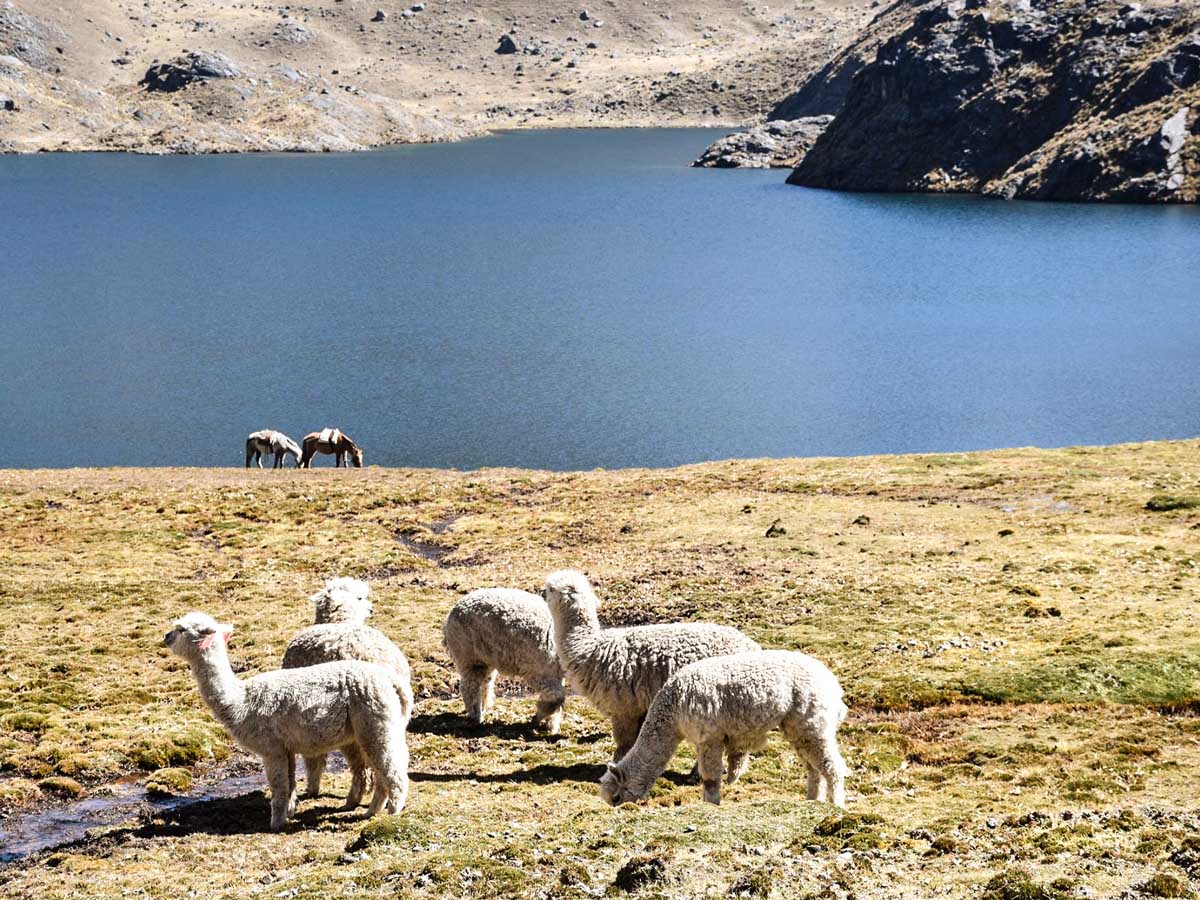
Peculiarities of Llamas and Alpacas:
- Llamas have a special way in the form of blood cells to store oxygen at high altitudes.
- Male llamas sharpen their teeth to fight and can injure others if they do not move away.
- Llamas were used to loading construction materials throughout the construction of Machu Picchu.
- Alpacas and llamas often interbreed, and the result is called a huarizo.
- Currently, alpacas have a value of hundreds of thousands of US dollars, they make it thanks to their unusual wool, called fibre.
- Alpaca fibre is softer than wool.
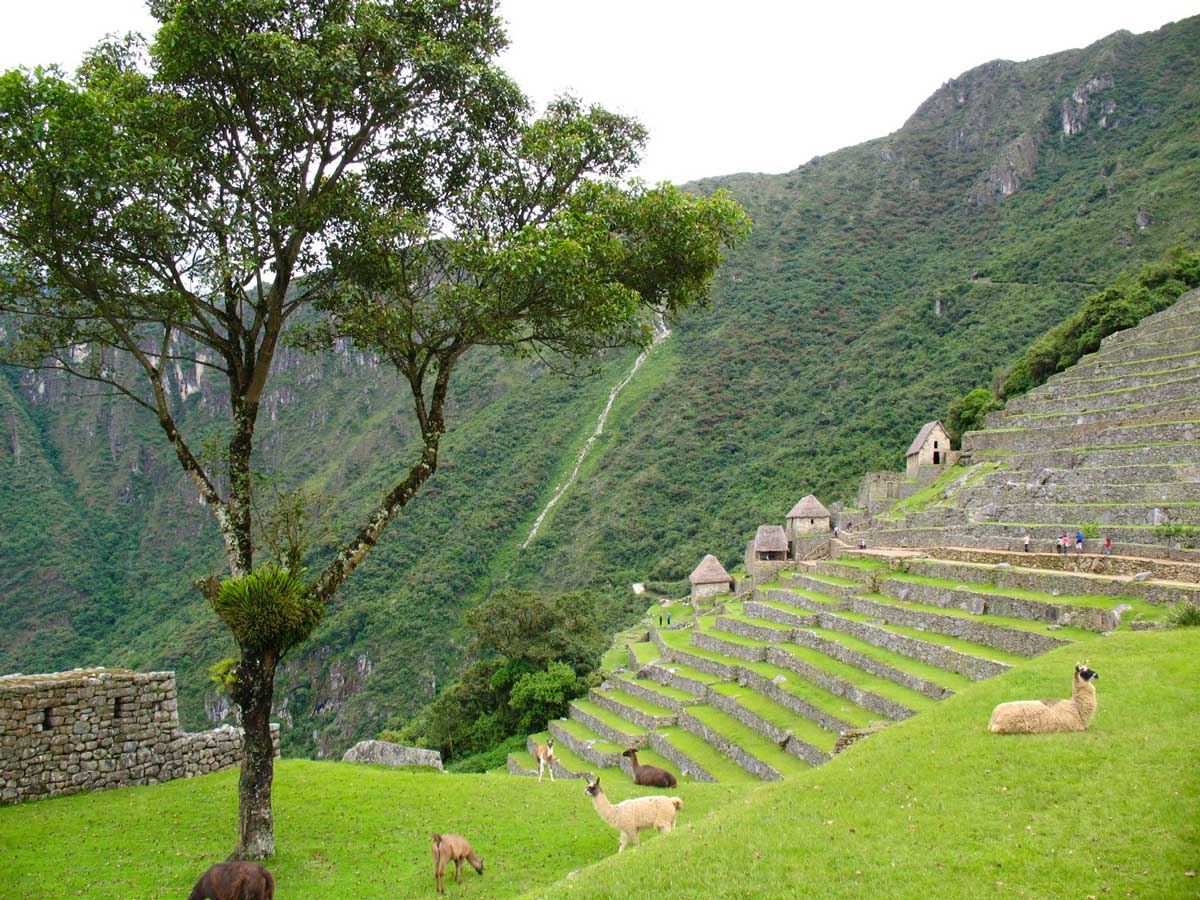
Amazing Tours to see Llamas in Machu Picchu
There are many routes to Machu Picchu, but none is like the Inca Trail Tours, the most famous pedestrian path in the Americas. After flying from the capital of Peru, Lima, you will arrive in Cusco to hike for 4 days along a path through forests and dense fog, millenary stone steps and discover the ruins of ancient fortifications and Inca cities, and all the time enjoying majestic views.
- Salkantay Trek to Machu Picchu, 5 days
- Hiking the Inca Trail to Machu Picchu, 5 days
- Inca Quarry Trail, 4 days
- Choquequirao Trek, 4 days
- Lares Trek to Machu Picchu, 4 days
- 2 Day Inca Trail Tour
- 2 Day Inca Trail with Camping
- 3 Day Inca Trail
- Vilcabamba Hike to Machu Picchu, 6 days
- Choquequirao Trek to Machu Picchu, 9 days
- Ausangate Trek, 7 days
If you like to visit Machu Picchu, we recommend that you book your Machu Picchu ticket in advance, so you can enjoy your holidays in Peru without any problems.
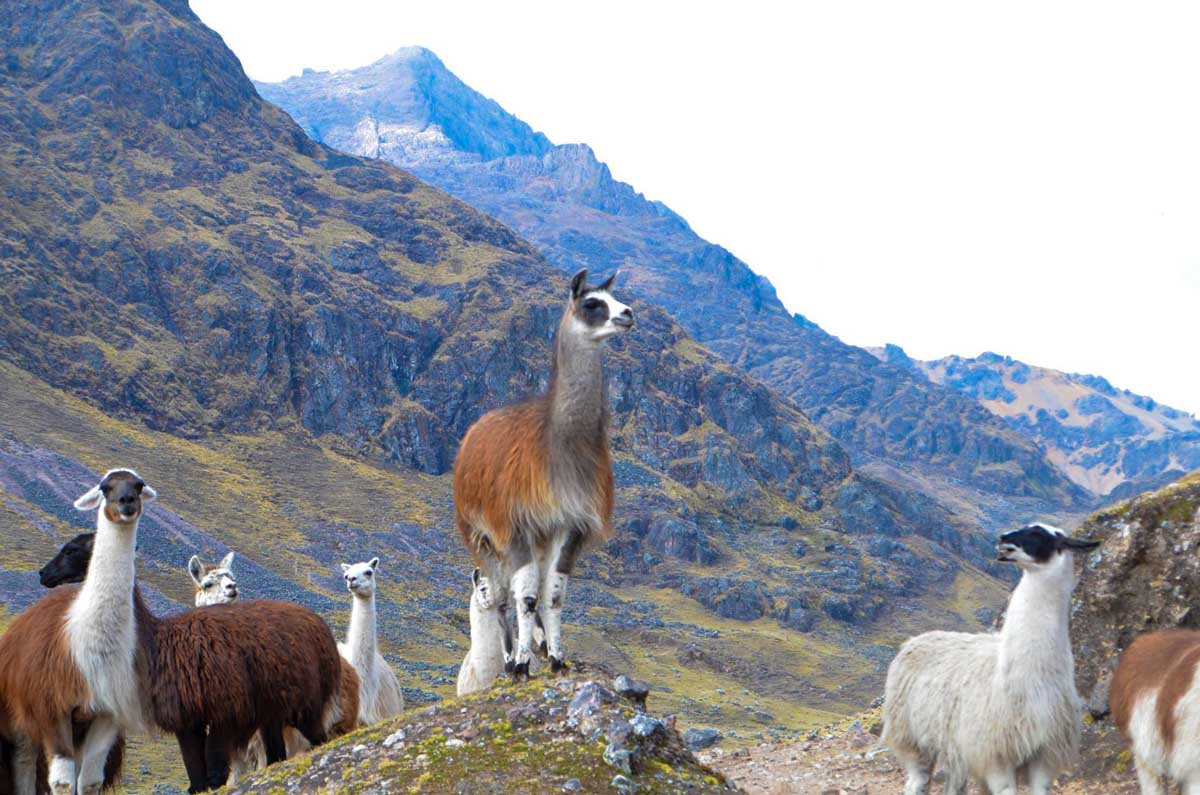
When Is the Best Time to Watch Llamas and Alpacas at Machu Picchu?
The best period is during the dry season, which covers the months of April to the end of September. It starts to rain in October and you can see Machu Picchu covered with clouds. If you are travelling in June, we advise that you book a tour of Inti Raymi 2025 on 24 June, as well as the Palcoyo Mountain Tour, an incredible Rainbow Mountain located in the Andes of Peru.






